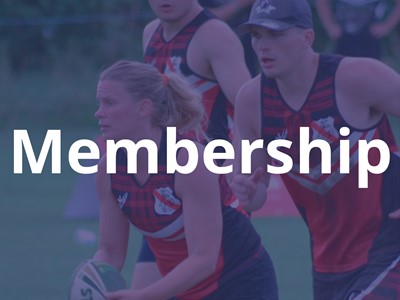Find out more about how this website uses cookies to enhance your browsing experience.
England Touch Association leading the way with injury research

- National governing body for Touch undertakes groundbreaking research into injury rates
- Study part of increased support for England national players and regional representative players
- Injury rate sustained during Touch tournaments comparable to Rugby Sevens
- Research to be expanded to national club tournaments in 2017
- Eighty-one percent of players surveyed rated medical provision and the overall standard of care as ‘good’ or ‘very good’
- Study was undertaken in collaboration with Manchester Metropolitan, Huddersfield, Chester and Bath universities throughout the research, working in partnership with Perform Better
The England Touch Association’s medical department is leading the way in research into injury rates within the sport of Touch.
Twelve months ago there was no published data describing the type and incidence of injuries sustained in the sport among European Touch players. But as part of the England Touch Association’s (ETA) medical and sports science teams’ commitment to ensuring excellent injury management during events the national governing body has undertaken work to better understand the demands of the sport in order to ensure that players are adequately prepared in the future.
The ETA medical and sports science team conducted an injury surveillance study during the 2016 European Touch Championships in Jersey. The early results showed an injury incidence in Touch comparable to Rugby Sevens but higher than either Rugby Union or Rugby League, something the ETA has attributed to the faster pace of Touch and increased demands in gross movement patterns.
That said, 90 percent of injuries were either transient or minor, with just over two-thirds occurring in the lower limbs and the majority coming in the second half of matches, both of which are consistent with other codes of rugby.
As time goes on the ETA medical and sports science teams will be able to design more specific prehabilitation and conditioning programmes for players and to share best practice among affiliate clubs, thereby reducing injury risk, preparing participants for the demands of tournaments, and providing appropriate medical cover.
Along with the injury surveillance study, the ETA medical team partnered with Perform Better, who kindly provided over 20 Catapult GPS units to continue with the research and understanding of the demands of this high intensity sport. The ETA’s sports scientists were able to monitor workload as well as identify other areas which could aid performance levels, allowing coaching staff to modify their teams regularly.
Head of medical services Cari Thorpe says that such research is essential if the ETA is to continue to be the leading association in Europe and to challenge Australia and New Zealand on the world stage.
“Touch is now a significant participation sport here in England with tens of thousands of people playing regularly,” she said. “It’s the ETA’s responsibility to provide our players and teams with the best practice regarding specific information tailored to the needs of our sport. With no existing information available we undertook our own study, which has produced some interesting results, especially when you compare them with other codes of rugby.
“Needless to say, we want to reduce injury occurrences in the future, both to ensure a duty of care to our players as well as increase availability of squads and achieve success within tournaments.”







